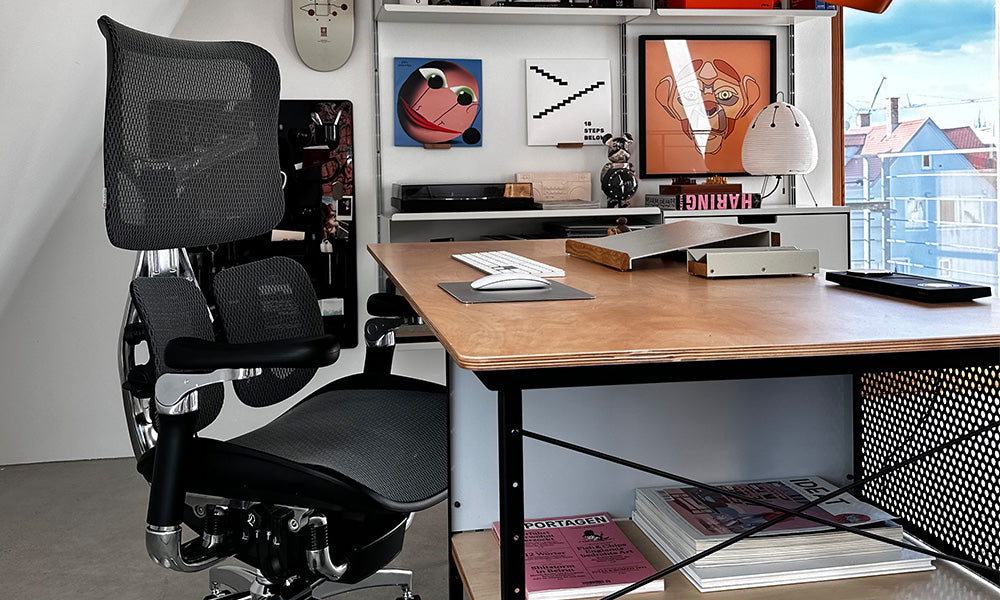Back pain is one of the most common ailments faced by office workers, largely due to prolonged periods of sitting. At the heart of ergonomic seating lies lumbar support, an essential feature designed to maintain the natural curve of your lower spine and alleviate back discomfort. Whether you're a professional, a gamer, or a student, understanding the role of lumbar support and choosing the right option can make a world of difference for your comfort and health.
What Is Lumbar Support and Why Is It Important?
The lumbar spine, commonly referred to as the lower back, has a natural inward curve. When you sit for extended periods without proper support, this curve can flatten, leading to strain on spinal discs, muscles, and ligaments. Over time, this strain may result in chronic back pain, poor posture, and even more severe spinal issues.
Lumbar support in office chairs aims to:
- Maintain the natural curve of the lower back.
- Reduce pressure on the spine and surrounding muscles.
- Encourage proper sitting posture.
By supporting the lower back, lumbar support helps prevent slouching and distributes body weight evenly across the spine, reducing the likelihood of pain and discomfort.
Types of Lumbar Support
There are several types of lumbar support available in office chairs, each offering unique benefits:
- Fixed Lumbar Support
- Built directly into the chair’s backrest.
- Provides consistent support but lacks adjustability, which may not suit all users.
- Adjustable Lumbar Support
- Allows users to customize the height, depth, and sometimes firmness of the support.
- Ideal for people with specific back issues or varying seating preferences.
- Dynamic Lumbar Support
- Adapts to your movements, providing consistent support as you shift positions.
- Great for active sitters who change posture frequently.
- External Lumbar Cushions
- Portable and versatile, these cushions can be added to chairs without built-in lumbar support.
- A budget-friendly option but may lack the ergonomic precision of integrated designs.
How to Choose the Right Lumbar Support
Finding the best lumbar support option depends on your specific needs, preferences, and work environment. Here are some factors to consider:
-
Ergonomic Design
Look for chairs with contoured backrests that match the natural curve of your spine. Features like seat depth adjustment and recline mechanisms complement lumbar support to enhance overall comfort. -
Adjustability
Opt for chairs with adjustable lumbar support for a tailored experience. This ensures that the support aligns perfectly with your lower back, regardless of your height or posture. -
Material and Durability
Choose a chair with high-quality materials, such as breathable mesh or memory foam, for long-lasting support and comfort. - Workstyle and Usage
- For professionals who sit for long hours: Chairs with dynamic lumbar support, like the Sihoo Doro S300, are ideal.
- For gamers or students: Consider ergonomic chairs with adjustable lumbar systems, such as the Sihoo Doro C300.
-
Budget
While high-end ergonomic chairs may seem like a significant investment, their health benefits and durability often outweigh the initial cost.
Top Recommendations for Lumbar Support Chairs
Here are some options that stand out in the world of ergonomic seating:
-
Sihoo Doro S300:
Features a dynamic lumbar support system and anti-gravity recline mechanism, perfect for long hours of work or gaming. -
Sihoo Doro C300:
Known for its self-adaptive lumbar support and flexible backrest, this chair is a great choice for people with varying sitting habits. -
Sihoo Doro S100:
Offers dual dynamic lumbar support and independent backrest adjustability, making it suitable for users seeking long-term comfort.
Tips for Maximizing Lumbar Support Effectiveness
Even the best lumbar support won't help if you don't sit properly. Keep these tips in mind:
- Sit with your back fully supported by the chair’s backrest.
- Adjust the lumbar support so it fits snugly against your lower back curve.
- Ensure your feet are flat on the ground and your knees are at a 90-degree angle.
- Take regular breaks to stand, stretch, and move around.
Conclusion
Lumbar support is not just a feature—it’s an investment in your health and productivity. By choosing the right office chairs and sitting mindfully, you can significantly reduce back pain and enhance your overall well-being. Whether you opt for a chair with dynamic lumbar support or add an external cushion to your existing setup, prioritize your spine’s health.
The right chair doesn’t just support your back; it supports your lifestyle. Take the first step toward a healthier sitting experience today!



































